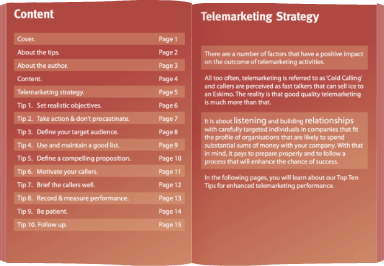The effectiveness of organisational marketing strategies can make or break a business. New business development isn’t easy. And, every marketer is looking for an edge to drive competitive advantage.
Account-based marketing, the importance of unearthing unique selling points, developing Marketing Qualified Leads (MQL), analytical segmentation and profiling, and other such disciplines have long been used as the basis for running effective marketing campaigns.
But, are segmentation and profiling still vital for lead generation? After all, the principle of targeting has been around for decades.
Is Segmentation Outdated?
Mark Ritson’s recent online article in Marketing Week posits that segmentation, long considered a cornerstone of marketing, may be losing its sheen. He argues that marketers sometimes include segmentation in their plans because they feel they have to do so. The reality, he claims, is that a single, compelling message can resonate across diverse audiences. He challenges the assumption that there will always be a need for exhaustive segmentation.
Don’t Throw Mud Against Walls
When it comes to lead generation, though, one could argue that segmentation, profiling, and database selection are still core components for success. What’s more, we could also make a case for them being more crucial than ever in a world where consumers’ preferences and behaviours change at a breathtaking pace. Tracking down the right individual that makes buying decisions is tougher than ever. So, why would we hit and hope?
The Marketing Evolution
The digital age has ushered in an era of unparalleled connectivity, data abundance, and automation. With Artificial Intelligence, we’re hurtling forward at even greater speed. Where will it stop?
These advancements have transformed how brands interact with their audiences and how marketers tailor their messages. That’s as much the case in the B2B Marketplace as it is for B2C.
With this backdrop, it’s not unreasonable to suggest that traditional practices should be up for reassessment.
Segmentation: Navigating the Data Maze
To some, perhaps the jury is out on the value of segmentation in B2B marketing. A look at a few statistics reveals a mixed picture:
- According to B2B Marketing, 60% of B2B marketers feel their segmentation efforts are only “somewhat effective.”
- On the flip side, MailChimp’s study demonstrated that segmented email campaigns achieved a 14.31% higher open rate than non-segmented campaigns.
- Moreover, segmented campaigns boasted a remarkable 100.95% higher click-through rate compared to non-segmented ones, as per the same MailChimp study.
Ultimately, statistics are only as useful when they relate to one’s own business. And, different personas may behave differently depending on their industry. They may respond favourably to particular messages and not to others. Certain buyers may engage more from one means of communication while others may prove elusive. And, timing plays a huge role in decision-making.
When I talk about marketing and lead generation, I somewhat flippantly say:
‘if it was that easy, we’d all do it…’
Targeting: Precision vs. Pragmatism
Ritson’s critique extends to targeting, emphasising the diminishing returns of hyper-targeting. While precise targeting can yield results, it often comes at a high cost. But, couldn’t that also be said about campaigns that remove differentiation? How do you identify those that are more likely to buy? Hit and hope is a rarely effective strategy. Throwing mud against a wall generally results in a sticky mess!
One challenge with deep segmentation is that marketers may end up whittling down the audience to such an extent that all their eggs are in one basket. If those few key targets don;t respond, what then? So, a degree of pragmatism is needed to widen the audience. That includes reaching out to influencers in addition to decision-makers. Who feels the pain? Can they carry the message up the chain of command? Could the industry type, and size of company be varied? Again, this comes down to judgement, and company goals.
Is Intent all it’s Cracked up to be?
Increasingly, we’re hearing about intent as a driver of activity. Of course, if you can isolate those potential buyers that are ready to buy, and that demonstrate interest, surely that’s the holy grail. There are probably plenty of triggers that point towards the right timing for marketing outreach. Technology solution providers suggest that’s possible. Maybe it is. But, it’s still not straightforward. Ask yourself how many buyers in your target audience are ready to buy right now? And, will they make themselves known?
I’m a big fan of analysis. I like to look for trends. Data analytics can flush out interesting opportunities. But, it’s not all about the data. Buyers don;t buy just because they have a need. There are several hurdles most buyers need to overcome before making an initial enquiry, and before taking that to a considered purchase. Being visible, and accessible, when that happens is not simple.
Positioning: Remembering the Customer
Ritson’s final point focuses on positioning, urging brands to simplify their approach. He contends that consumers don’t necessarily seek brands with unique attributes; instead, they value consistent messaging and presence. This suggests that the pursuit of differentiation might not be as vital as previously thought.
In lead generation that could also be true. Our experience is that every campaign should be customer-centric. Hence, it’s less about what you offer, and more about the customer pain. Positioning your key benefits in terms of the customer’s view of the world is rarely a bad thing. Check out this article on the subject of why many sales people don’t understand benefits.
Aligning Modern Practices with Traditional Wisdom
In the face of these changes, it’s imperative to strike a balance between modern marketing practices and traditional wisdom. Segmentation, profiling, and database selection remain essential components of lead generation, despite evolving trends. The more analysis that sheds light of customer trends, usage patterns, requirements, and behaviour the better. Big data, AI, data analytics and other methods of enhancing targeting must surely be the way to go.
Of course, the theory is that by undertaking these measures, it allows businesses to identify and engage with the right audience at the right time. Well, that’s the theory anyway!
Does Brand Play a Role?
Our world is certainly more focused at the business end of marketing. Without sales, businesses can’t grow. This isn’t the article to discuss the merits of brand development. However, whether it’s consumers or business buyers, trust is likely to be a key element within the buying decision.
Whether that’s having a compelling website, developing engaging content, promoting thought leadership, running webinars or roundtable events, or even conference-speaking to bolster credibility, and raise awareness, knowing your target audience is essential.
Database Selection: Quality Over Quantity
The foundation of effective lead generation lies in having a high-quality marketing database. Our article, “The Ultimate Guide to a High-Quality Marketing Database,” underscores the importance of database quality. A clean and well-maintained database ensures that your marketing efforts are reaching the right prospects, improving conversion rates and ROI.
Maintaining data integrity is crucial. In our piece on “Database Validation for Lead Generation,” we delve into strategies for data cleansing and validation. By ensuring data accuracy, your brand can communicate its message consistently, enhancing brand recall and resonance.
GSA Business Development: Your Lead Generation Partner
At GSA, we understand that things are changing. We also try to adapt our approach to reflect that. That means using technology, and analysis, wisely and pragmatically.. That’s why there remains the enduring significance of segmentation, profiling, and database selection. Our Lead Generation Services harness these principles to deliver qualified leads that convert into valuable opportunities.






